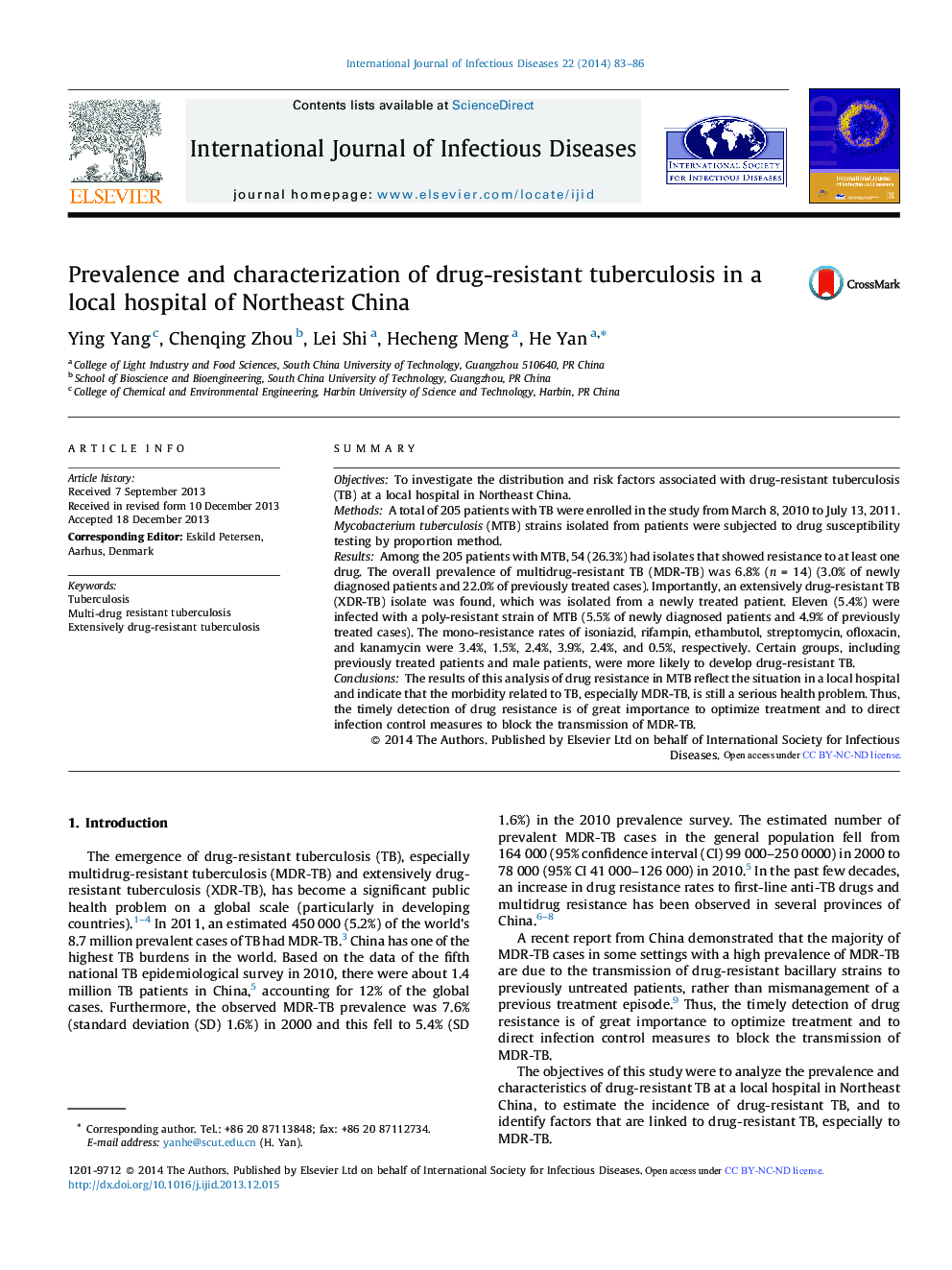| Article ID | Journal | Published Year | Pages | File Type |
|---|---|---|---|---|
| 3362636 | International Journal of Infectious Diseases | 2014 | 4 Pages |
SummaryObjectivesTo investigate the distribution and risk factors associated with drug-resistant tuberculosis (TB) at a local hospital in Northeast China.MethodsA total of 205 patients with TB were enrolled in the study from March 8, 2010 to July 13, 2011. Mycobacterium tuberculosis (MTB) strains isolated from patients were subjected to drug susceptibility testing by proportion method.ResultsAmong the 205 patients with MTB, 54 (26.3%) had isolates that showed resistance to at least one drug. The overall prevalence of multidrug-resistant TB (MDR-TB) was 6.8% (n = 14) (3.0% of newly diagnosed patients and 22.0% of previously treated cases). Importantly, an extensively drug-resistant TB (XDR-TB) isolate was found, which was isolated from a newly treated patient. Eleven (5.4%) were infected with a poly-resistant strain of MTB (5.5% of newly diagnosed patients and 4.9% of previously treated cases). The mono-resistance rates of isoniazid, rifampin, ethambutol, streptomycin, ofloxacin, and kanamycin were 3.4%, 1.5%, 2.4%, 3.9%, 2.4%, and 0.5%, respectively. Certain groups, including previously treated patients and male patients, were more likely to develop drug-resistant TB.ConclusionsThe results of this analysis of drug resistance in MTB reflect the situation in a local hospital and indicate that the morbidity related to TB, especially MDR-TB, is still a serious health problem. Thus, the timely detection of drug resistance is of great importance to optimize treatment and to direct infection control measures to block the transmission of MDR-TB.
